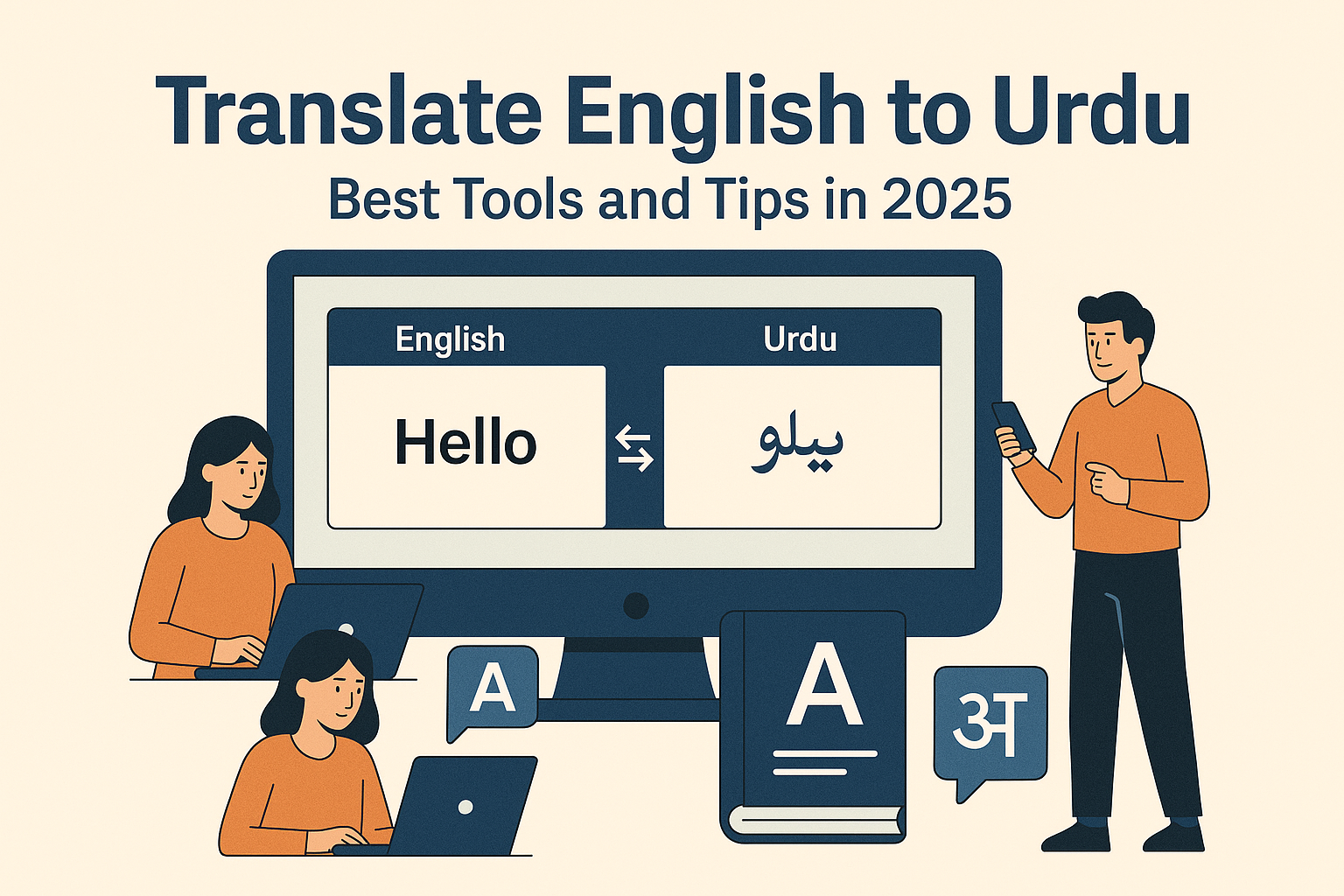In today’s globalized world, a person must be capable of speaking more than one language. The highly spoken language of South Asia, Urdu, is typically an option for individuals in need of translation. English to Urdu translation is required often enough as a student, businessman, or simply just someone attempting to communicate with family and friends translate English to Urdu. From the translation of scholarly work to everyday conversation, numerous tools and techniques are available that can facilitate the translation to be smooth and accurate.
This post explains why English to Urdu translation is important, the best tools you can utilize, some of the common problems you might run into, and professional tips to ensure your translations are accurate and culturally appropriate.
Why Translate English to Urdu?
Urdu is the national language of Pakistan and is of great cultural and literary significance. Urdu is widely spoken in daily life by numerous people of Pakistan and across the globe, especially in the UK, USA, Canada, and the Middle East. English to Urdu translation is needed in most cases, such as
- Education: Translating English text for better understanding by students is often needed.
- Lightning-fast translation of Urdu-speaking clients is needed to be translated by experts in the form of documents, proposals, and presentations.
- Social Media: Bloggers and influencers translate content to engage more readers who can comprehend Urdu.
- Private usage: Communication with friends and family who are accustomed to speaking Urdu.
The demand for English to Urdu sentence translation has grown exponentially, as people prefer receiving messages and content in their native language.
Top Free and Paid Tools to Translate English to Urdu
There are a few apps and software that make English-Urdu translation easier than ever. Some of the most popular ones are:
Google Translate English to Urdu
Google Translate is one of the most popular tools for use. It supports Urdu and allows one to translate text, documents, websites, and even voice into Urdu from English.
Features
- Free to use
- Real-time translation
- Supports voice and handwriting
Limitations
- Battles with complex sentences and idiomatic phrases
Microsoft Translator
Microsoft Translator program offers accurate translations and is especially excellent for corporate communications.
Features
- Translates documents
- Multilingual meeting collaboration tools
Reverso
Reverso also has a focus on context-based translations so it is slightly more proficient at phrases and idioms.
Offline Urdu Dictionary Apps
For those who don’t have continuous internet, offline apps like UrduPoint’s translator or Linguee’s downloadable dictionaries might be useful.
Comparison of these utilities reveals that although Google Translate English to Urdu is ideal for amateurs, professional translators might find more sophisticated or paid utilities necessary.
Challenges in Translating English into Urdu
Translation does not always come as easy as it appears. Although tools such as translate to Urdu and translate in Urdu are helpful, they never provide the real meaning of the original text.
Common Challenges
For example, the English idiom “It’s raining cats and dogs” cannot be translated literally into Urdu without losing its context. Manual editing and cultural awareness come into play here.
How to Translate English to Urdu Effectively: Pro Tips
In order to make your translations sound natural and as accurate as possible, follow these expert tips:
- Start with tools like Google Translate English to Urdu but always proofread and edit manually.
- Learn Basic Urdu Grammar Learning sentence formation and basic grammar rules in Urdu can considerably improve your translations.
- Context Over Word-to-Word Avoid word-by-word translation and instead try to translate the meaning. This is even more important in the case of English to Urdu sentence translation.
- Get Native Speakers to Verify If possible, get a native Urdu speaker to review your work for linguistic and cultural accuracy.
- Practice The more you translate, the quicker you will improve at identifying errors and achieving fluency.
Applications of English to Urdu Translation in Everyday Life
Education
Students rely on translations to understand complex English textbooks, research documents, and assignments.
Business Communication
Companies translate emails, agreements, and marketing material to communicate with Urdu-speaking clients.
Content Creation
Translators Bloggers YouTubers and social media personalities use translate in Urdu tools to speak to individuals and build trust.
Government and Legal Documents
Official translations are required on visas, certificates, and legal agreements.
These daily uses demonstrate how much services translate English into Urdu have become in our current globalized age.
Conclusion
English to Urdu translation has become essential in 2025 since the demand for multilingual communication is constantly on the rise. With effective methods and tools, anyone can easily eliminate the language barrier. Regardless of whether you are using translate to Urdu, translate in Urdu, or advanced methods, the essential point is to combine technology with cultural insight in an attempt to achieve accurate and natural results.
Start exploring these tools now and become more professional and effective in your English to Urdu translations.
Frequently Asked Questions
Q1: How do I translate English to Urdu online?
ANS: You can translate words, documents, and even voice messages from English to Urdu using Google Translate, Microsoft Translator, or Reverso.
Q2: Which app is best for English to Urdu translation?
ANS: Google Translate English to Urdu is the most popular free download. For more business needs, Microsoft Translator may be a good choice.
Q3: Is Google Translate English to Urdu accurate?
ANS: It’s okay with elementary-level translations but tends to get bogged down with compound sentences, colloquialisms, or cultural references. Manual proofreading is recommended for accuracy.
See More News














Leave a Reply